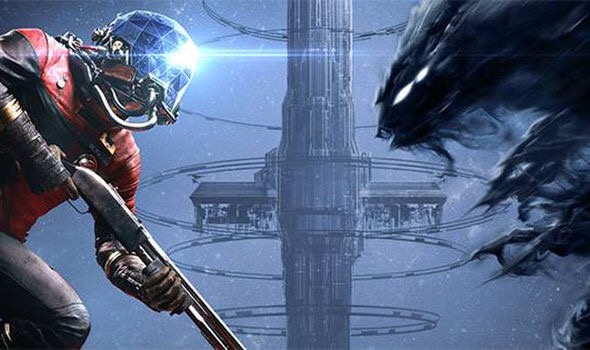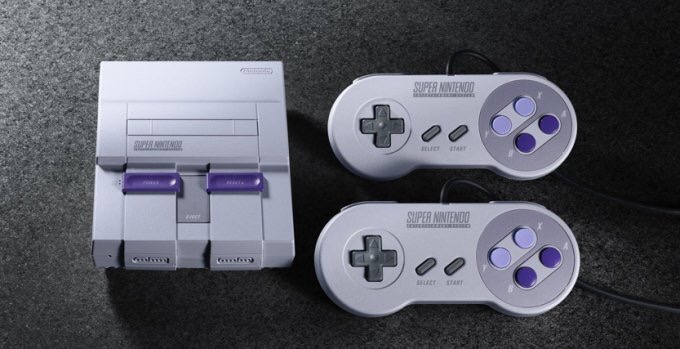Arkane have, in just a short amount of time, mastered their craft. The Dishonored games did a great job at throwing a bunch of tools at the player and letting them navigate rich deep worlds the way they want to. Prey feels the same, only amplified. Trading in swords and spirits for guns and neurological enhancements, Prey could be construed as Arkane’s take on science fiction. It hits some pretty familiar beats throughout, but Prey feels like a natural evolution of the Arkane trademark formula.

Prey itself takes place in an alternate timeline where John F Kennedy survived the assassination attempt in 1963, in turn directing more funding into the space program and sending us into space much earlier. In Prey, you are Morgan Yu, an employee for Transtar who presently owns the research space station Talos-1. Morgan wakes up with little to no memory of his past, but discovers that he himself is intrinsically tied to the station and its bizarre alien research.
Prey-Screen-CorpsePrey’s storyline sounds pretty cliché and at times it is, though the story isn’t afraid to head into stranger directions than you’d normally expect. As the game began I wasn’t too keen to progress in the story, instead exploring the space station at my own leisure. Though as I got further in, Prey threw some twists at me that hooked me on the ideas it was selling. Despite this, I still found the playable character somewhat unlikable and the main villain quite forgettable. Still, Prey’s story hits the right beats at the right time to pique players’ interests. Think of it as a warped combination: Memento meets Dead Space meets BioShock.
When you play the first hour or so of Prey, more seasoned gamers will see where the game draws inspiration. You’re on a space station, it’s falling apart, you start off with a wrench, you use powers to defend yourself called psionics and you’re being lead along by a faceless or mysterious voice. Prey is woven from strong genes – taking inspiration from Dead Space, Dishonored, System Shock and BioShock. It’s a first-person game that isn’t afraid to have moments of quiet time to let you explore the sprawling space station that is Talos-1 at your own pace and leisure.
That’s really the name of the game with Prey. It’s an open world, that lets you explore areas of the space station in (almost) whatever order you wish. Everything is connected, whether you want to naturally get to an area using the winding corridors of the space station or you want to leave the station and re-enter it elsewhere while floating in space. Prey’s densely packed world, shortcuts and connections all come together to give the game a sense of having an open world without the barren filler environments that commonly come with it.
When you’re navigating the world of Prey you’ll be outfitted with a variety of abilities, weapons and powers that let you approach the playground of Talos-1 the way you want to. Most weapons serve a dual purpose – they can also be used to create platform on the walls to circumvent obstacles, or activate buttons from a short distance away. Each weapon having multiple uses encourages experimentation, as well as thinking outside of the box.
When you’re done with Prey once, I’d be surprised if you didn’t want to jump into it again. Not only because you’ll probably miss something while trying to explore the sprawling Talos-1 station, but also because you can change the outcome of the game based on your treatment of others throughout the story. It’s nothing totally revolutionary, but given Prey’s flexible systems, running through a second time is bound to be different to your first, intentional or not.
Your play style will greatly decide how long it’ll take you to run through Prey, though I’d estimate most players would get at least fifteen to twenty hours out of their first run. Perhaps even more if they explored the station thoroughly. This much is certain: Prey is a game that just begs to be played at least once more once you’ve finished it.
Taking a page out of Dishonored’s book, Prey features a stylised art style to bring its world to life. The result is something that never looks hyper-realistic but something more distinctive instead. Artistically speaking, Prey brings together retro designs with futuristic ones to create something not unlike BioShock’s Art Deco style. From a technical standpoint, the game is running on CryEngine which brings with it the usual caveats for consoles – namely longer than desirable load times. It’s not the best-looking game, especially compared to others, but Prey does its own thing and it does its own thing well.
Prey’s world is run down yet colourful, and the soundtrack perfectly complements the experience. Composed by Mick Gordon, the score is filled with sublime synth beats and strange, otherworldly noises and sound effects to create something eerie, atmospheric and tense. These pieces do an amazing job at elevating the already strong atmosphere aboard Talos-1, and is quite possibly one of the strongest soundtracks I’ve ever heard in a game.
Prey is another win for Arkane. It’s a game where everyone who plays it will have a different experience. One thing is certain though – that Prey remains a consistent experience from beginning to end. Providing players with intuitive gameplay systems with great synergy, freedom to approach combat how you want and game design that rewards creativity are just three ways that Prey succeeds. While BioShock was heralded as the spiritual successor to System Shock, Prey feels like a much more successful attempt. An absolute joy to play and experience.
follow me on twitter @julianexcalibur



























































